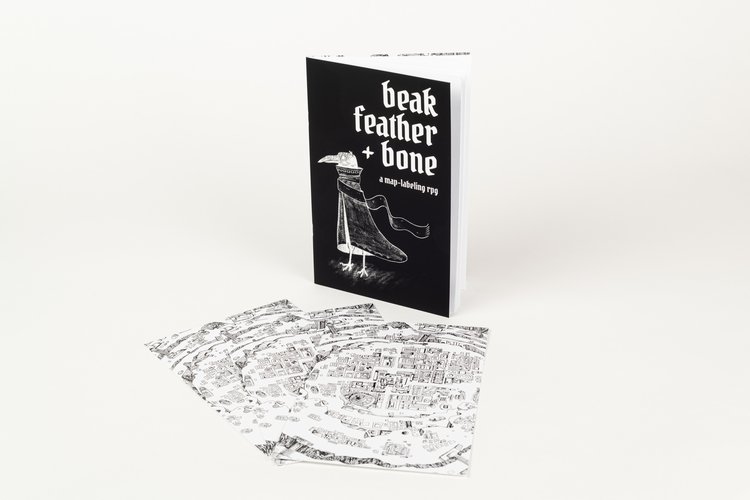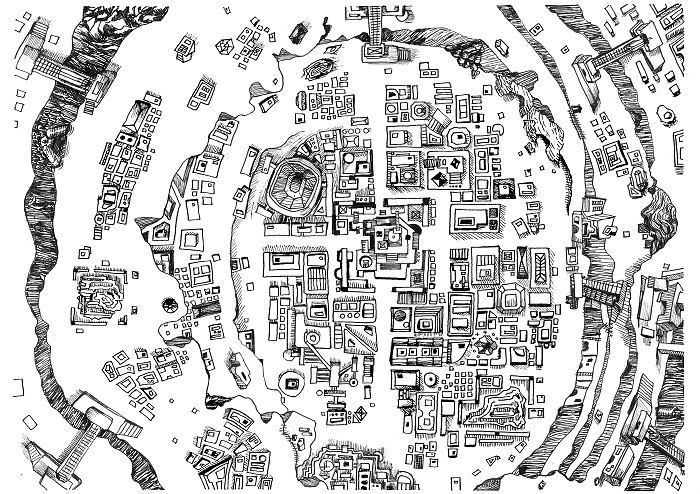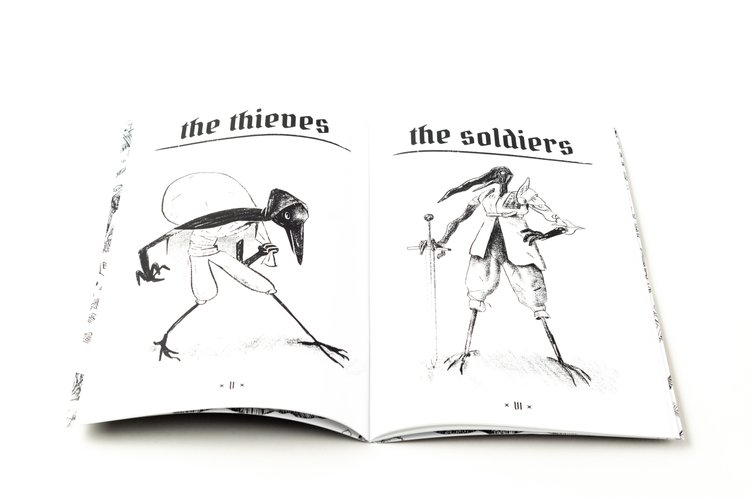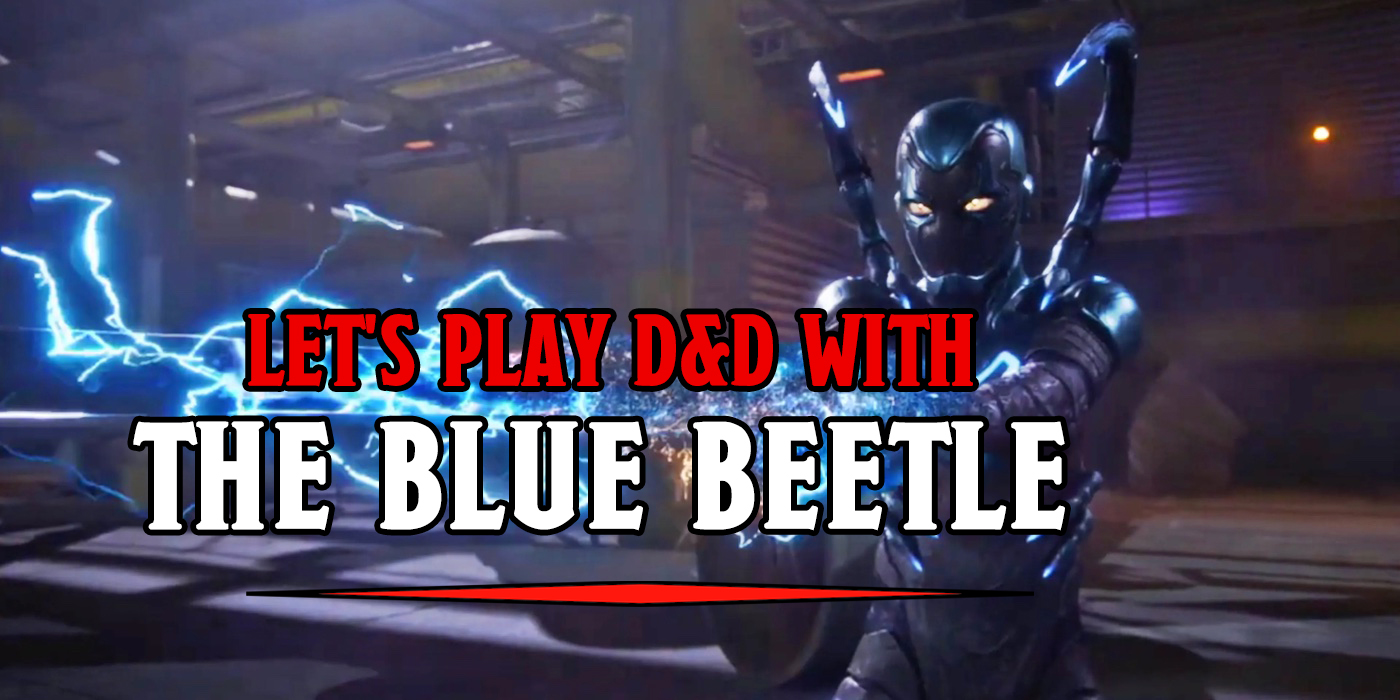Indie RPG Spotlight: ‘Beak, Feather, & Bone’ Lets You World-Build Head-to-Head or Co-op
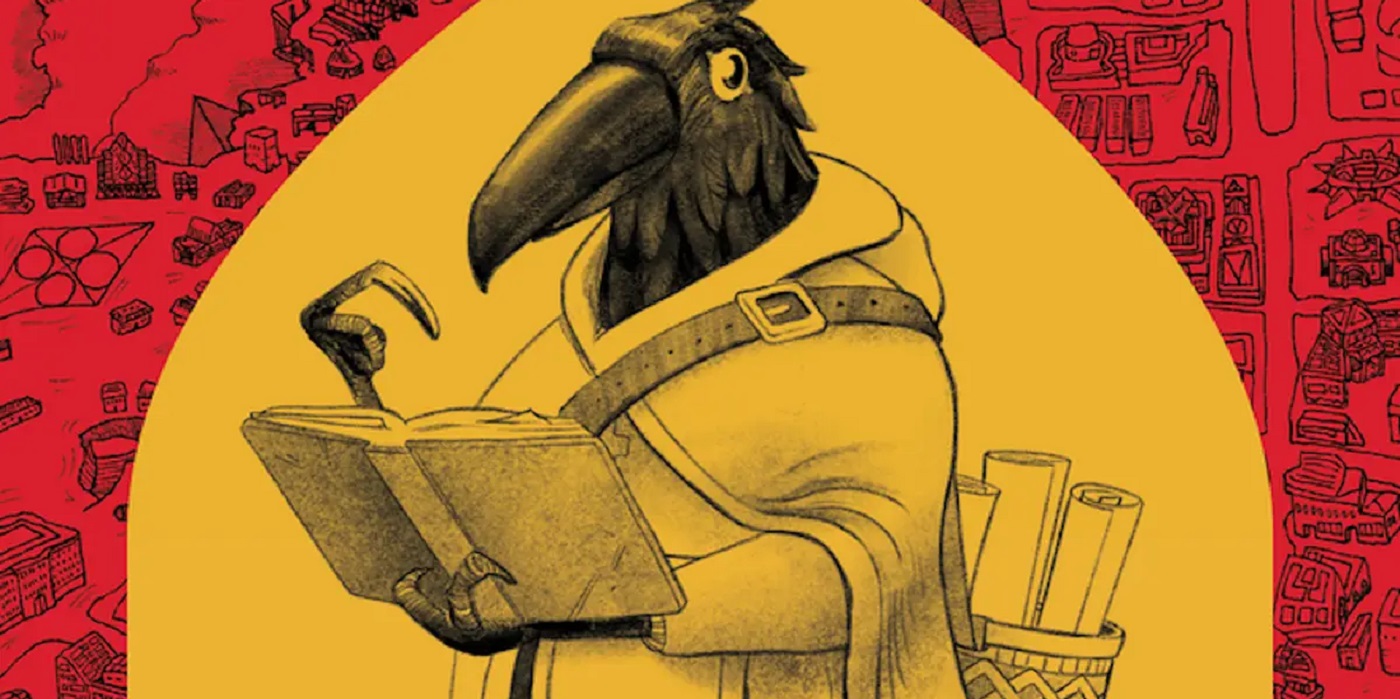
Beak, Feather & Bone isn’t your average tabletop RPG. This is a little cooperative, a little competitive, and a lot of city planning.
Beak, Feather, & Bone is a new collaborative world-building tabletop RPG that has people talking. And that’s in part to it being very familiar and comfortable, but also very different from some other games you may have played recently.
Beak, Feather, & Bone
Published by Possible Worlds Games, written by Tyler Crumrine with art by Austin Breed and Jonathan Yee, Beak, Feather, & Bone is a game that mixes a bunch of different dynamics for a game that’s something all its own. It’s described as…
“a collaborative worldbuilding tool as well as a competitive map-labeling RPG. Starting with an unlabeled city map, players are assigned community roles before taking turns claiming and describing locations. Players draw from a standard 52-card deck to determine a building’s purpose and then describe its beak (reputation), feather (appearance), and bone (interior). As buildings are claimed, a narrative for the town and its inhabitants emerges, including major NPCs and shifting power-dynamics.” – Possible Worlds Games Official Website
And it’s a game that’s pretty flexible depending on what players want. It can be competitive or collaborative–or both depending on your group’s dynamics. But there are also options for solo play, and character-driven sessions as well. Usually, RPGs specialize in one, maybe two-effect kinds of gameplay, but Beak, Feather, & Bone really tries to do it all.
Character Creation & Gameplay
In some ways, this game feels more like a board game or card game than a tabletop RPG. Character creation doesn’t seem to be a big part of the process. And when you start a session, players agree on the town’s “seat of power” and then each claims a role in the community. Some may be thieves or farmers. Then players pick their colored pen or pencil for coloring in parts of the map, and the game begins.
Much like a Powered by the Apocalypse game, aspects of your character are governed by the community role they take on. And it’s clear that in many ways, Beak, Feather, & Bone is inspired by this popular system. But it also takes a pretty sharp turn away from the PbtA system.
To play, everyone takes turns drawing cards, selecting structures on the map and claiming them (with the colored pens), and making notes on various cards. For example, a card will have a few sentences describing the building based on its “beak” (what people say about this place), “feather” (the structure’s appearance), and “bone” (what it’s like on the inside. Then it’s the next player’s turn. Face cards (because remember, you’re playing with a standard deck of 52) will ask you to instead answer questions about rivals.
So How Does the Game End?
This is by and large a world-building game. You’re claiming, describing, and fleshing out the city. Whoever has the most cards and therefore the most ‘sway’ over the city controls the seat of power and wins. Congratulations to the winner, they may not describe the seat of power much the same way the rest of the city was built and described.
It seems like a weird premise for a competitive or even solo game, doesn’t it? In fact, it feels like a strange premise for a game at all. But RPGs like this can be incredibly fun one-session mini-games. And more than that, I’ve seen simple games like this used to build out maps and even entire worlds used in other RPGs.
Beak, Feather, & Bone might not be for everybody. But its uniqueness makes it something a little special and worth checking out. You may not like it as a stand-alone game. But as a creative exercise or session zero to a larger game, I think it’s almost perfect.
To learn more about Beak, Feather, & Bone for yourself or to get your own copy, check out the Possible Worlds Games official website here.
Have you played Beak, Feather & Bone? Do games like this appeal to you, or do you prefer a more traditional sort or RPG? Have you ever had a group cooperatively build your world like this? Let us know in the comments!
Happy adventuring!

